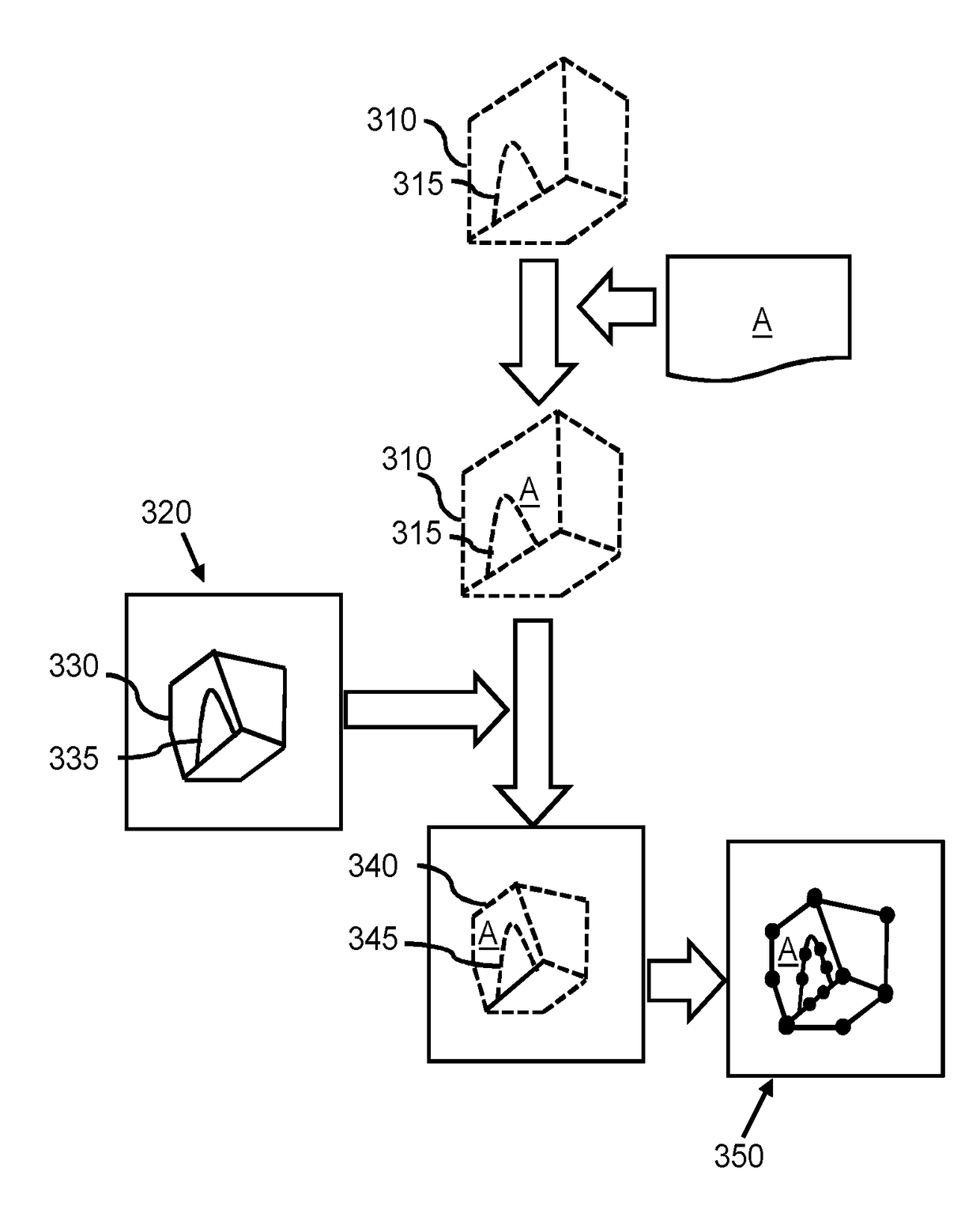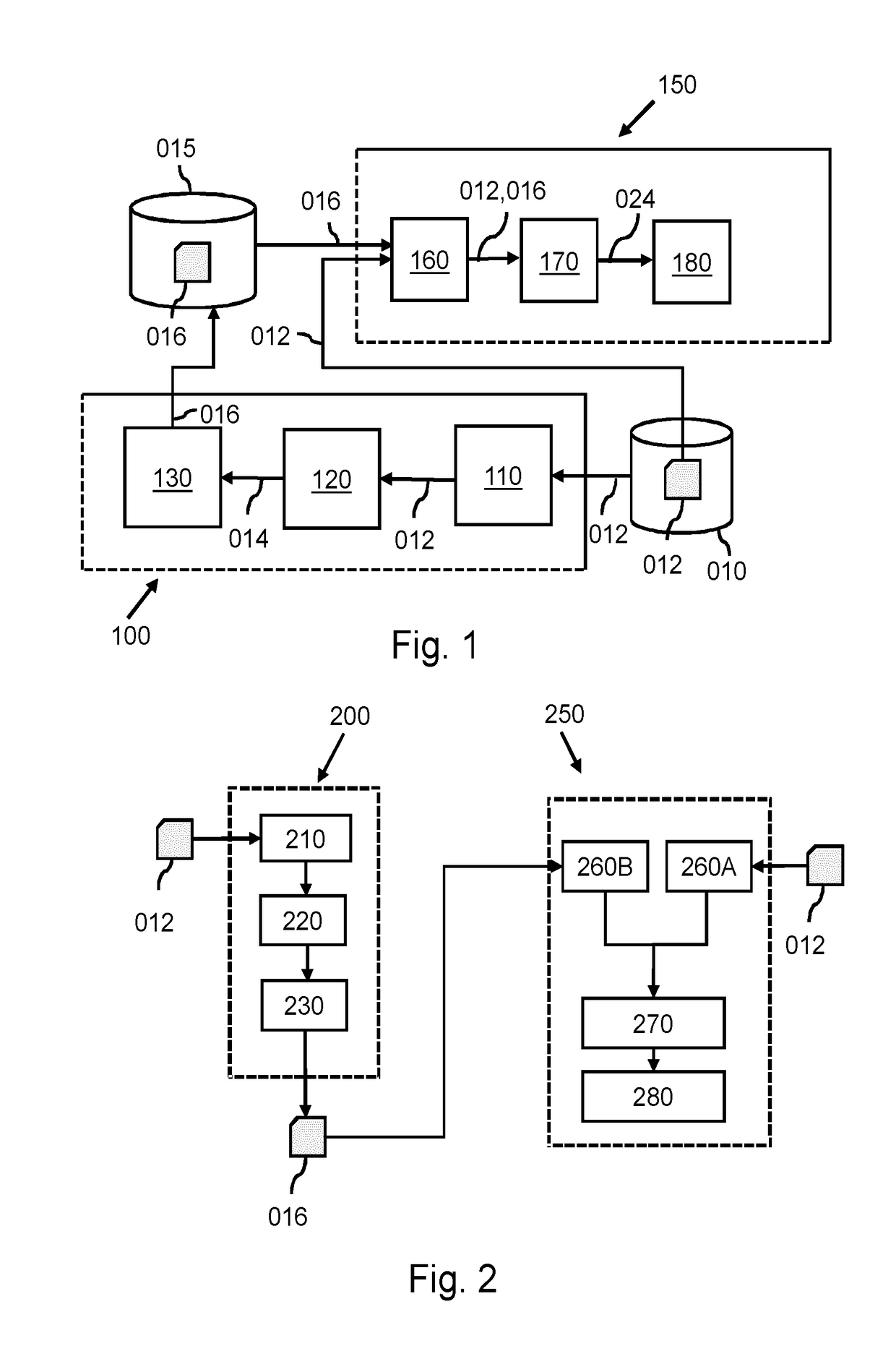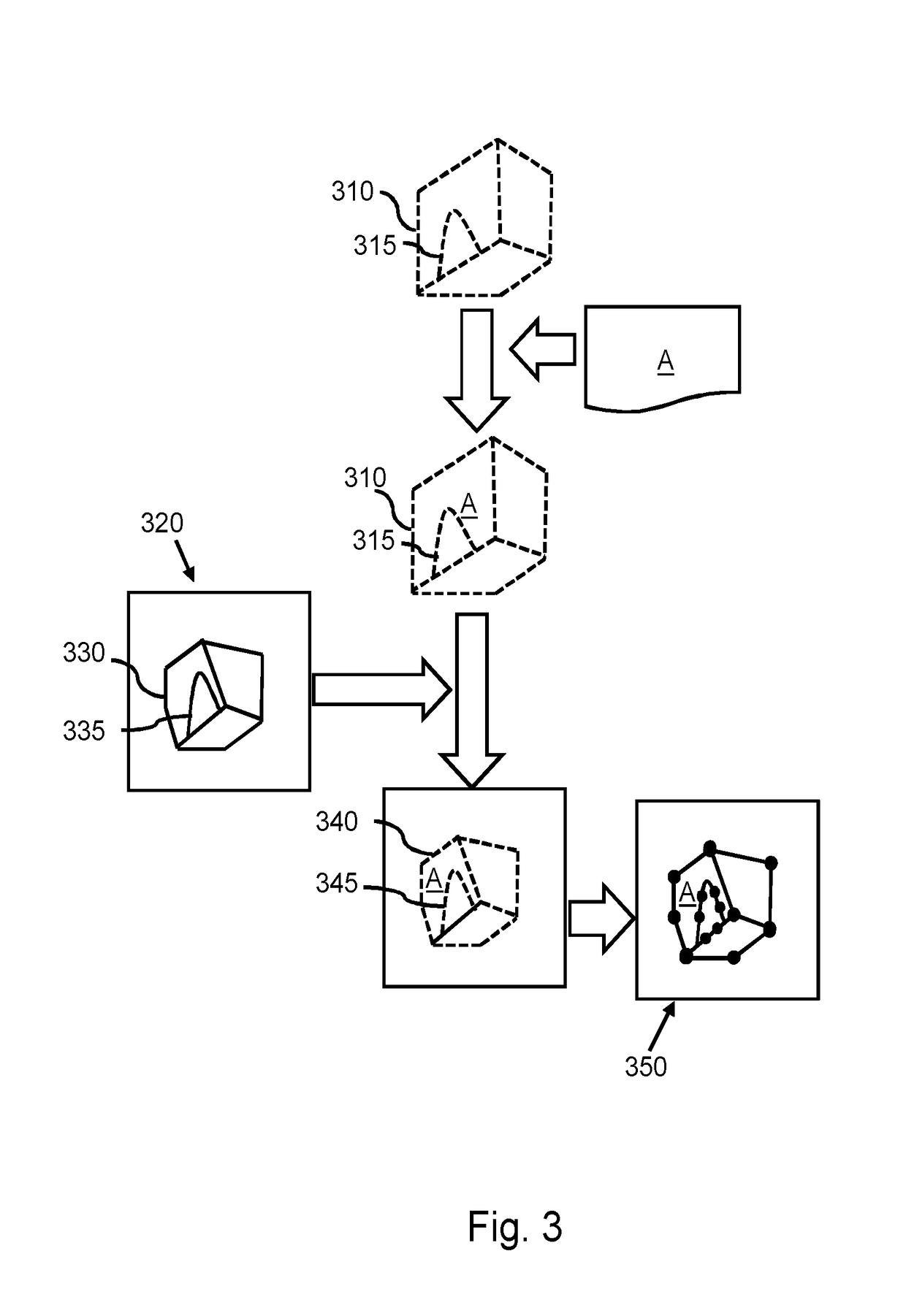Finite element modeling of anatomical structure
a technology of finite element modeling and anatomical structure, applied in the field of generating a finite element model of anatomical structure, can solve the problems of complexity, error and/or lack of accuracy
- Summary
- Abstract
- Description
- Claims
- Application Information
AI Technical Summary
Benefits of technology
Problems solved by technology
Method used
Image
Examples
Embodiment Construction
[0058]FIG. 1 shows a first system 100 for generating association data for use in generating the finite element model of an anatomical structure. FIG. 1 further shows a second system 150 for generating a finite element model of the anatomical structure based on a fitted model of the anatomical structure and association data.
[0059]The first system 100 may comprise an input interface 110 configured for obtaining model data 012 defining a segmentation model for segmenting the anatomical structure, the segmentation model representing a reference shape of the anatomical structure. The model data may be obtained for example, from a database 010.
[0060]The first system 100 may further comprise an identifying subsystem 120 configured for identifying a pre-determined anatomical region of interest in the segmentation model, the pre-determined anatomical region of interest having been pre-determined based on a mesh property being desired in meshing a finite element model part of the finite eleme...
PUM
 Login to View More
Login to View More Abstract
Description
Claims
Application Information
 Login to View More
Login to View More - R&D
- Intellectual Property
- Life Sciences
- Materials
- Tech Scout
- Unparalleled Data Quality
- Higher Quality Content
- 60% Fewer Hallucinations
Browse by: Latest US Patents, China's latest patents, Technical Efficacy Thesaurus, Application Domain, Technology Topic, Popular Technical Reports.
© 2025 PatSnap. All rights reserved.Legal|Privacy policy|Modern Slavery Act Transparency Statement|Sitemap|About US| Contact US: help@patsnap.com



